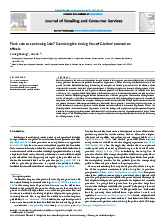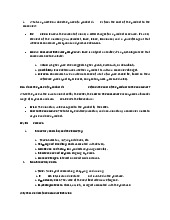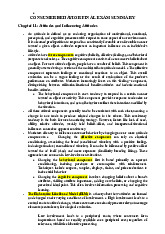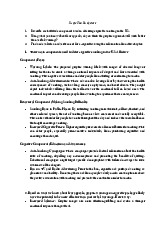

Preview text:
lOMoARcPSD|364 906 32
Mannequins, More Than Just Store Dummies
Perhaps equally as true as the statement “the clothes make the man” is the statement “the
mannequin makes the clothes.” Forty-two percent of consumers polled in a recent study stated
that what they saw displayed on a mannequin influenced their purchase decision. With the
forecast that “[a]ll department stores will become museums, and all museums will become
department stores,” threatening to become ever more real with online retail encroachment into
their sales, brick-and mortar stores are fighting back with an army of mannequins.
The plain white faceless, sometimes headless, torso mannequin that quietly blended unnoticed
into the background has been replaced with a new breed of mannequins that scream with
attention-arresting poses and astoundingly realistic physical features.
To be more than the colorless, uniform clotheshanger mannequins of yesteryear, mannequins
today are being created to personalize the brand. For example, Nike mannequins come alive in
action poses to communicate the energy and dynamism of athleticism, and the runway model
poses of Guess mannequins exemplify fashion sophistication and confidence.
Mannequins have long been the silent salespersons, ranking third, after friends and family, in
influencing purchasing behavior. It turns out that realistic, larger-sized mannequins are better
salespeople. Recent research shows that women are three times more likely to buy clothes when
they see them on a mannequin related to their size. Macy’s, Nordstrom, and the British
Debenhams department stores are using or report plans to use more realistic, full-bodied
mannequins. Developed after an extensive study that involved scanning thousands of women’s
bodies to arrive at a better understanding of women’s proportions, the mannequins in David’s
Bridal, the largest chain of bridal stores in the United States, have thicker waists and realistic imperfections
Another trend in mannequin realism centers not so much on creating more realistic body types,
but on providing mannequins with realistic details including pierced ears, tattoos, movable limbs
to better display clothes, and articulated fingers to better show off rings.
Mannequins have progressed beyond being the silent salesperson. Some mannequins are also
data collectors. EyeSee Mannequins are traditional-looking mannequins, except they have eyes
fitted with a camera lens that captures data on passersby. The data are fed to facial recognition
software; mined for shoppers’ age, gender, and ethnicity; and used in forecasting models to
develop marketing campaigns and store displays. Mindful of consumer privacy, EyeSee
mannequins do not record or send data of a sensitive nature such as biometric data.
Much more than just store dummies, mannequins contribute to the brick-and-mortar shopping
experience, exuding appeal to entice consumers to visit stores, poising provocatively to capture
consumer attention, sized and detailed to motivate consumers to make purchases. Mannequins
serve as store ambassadors, evangelizing brand image and selling clothes. lOMoARcPSD|364 906 32
1. Have you noticed the new mannequins in stores where you shop for clothes? What is your reaction?
2. The new types of mannequins have centered more on women than men. Would men be more
likely to buy clothes displayed on mannequins related to their size?
3. Digital mannequins collect data from passersby who are unaware that they are being recorded. Is this ethical?
Document Outline
- Mannequins, More Than Just Store Dummies




